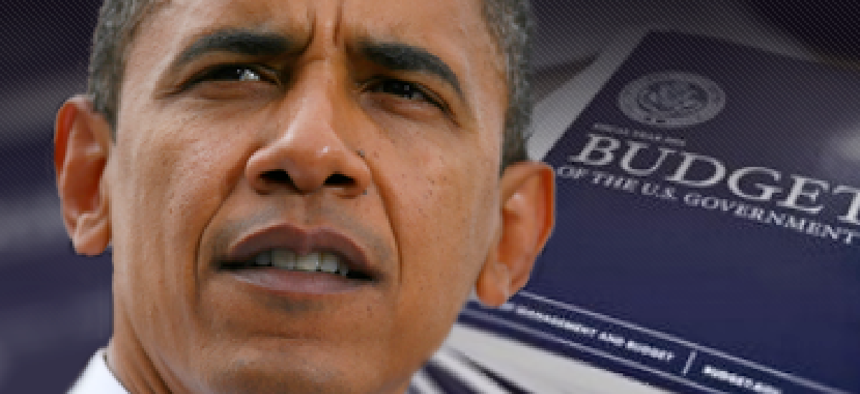Feds feel the pinch in Obama's proposed spending plan

The president's budget proposal offers a middle ground between the austerity budget passed by the Republican-led House and the more liberal document approved by the Senate, with a mix of spending cuts and revenue increases.

President Obama's budget proposal seeks to balance economic growth and deficit reduction. (FCW image)
President Obama's fiscal year 2014 budget offers a middle ground between the austerity budget passed by the Republican-led House and the more liberal document approved by the Senate. It promises deficit reductions of $1.2 trillion over 10 years, paid for with spending cuts and about $580 billion in new revenue, much of which will come from changing tax laws to get wealthy Americans to pay more in taxes.
The administration is seeking $1.058 trillion in discretionary spending, with $552 billion going to defense and $506 billion in non-defense spending. Overall spending, including mandatory programs, would hit $3.77 trillion, with a deficit of $744 billion.
"For years, the debate in this town has raged between reducing our deficits at all costs and making the investments necessary to grow our economy," Obama said on April 10. "And this budget answers that argument, because we can do both. We can grow our economy, and shrink our deficits."
The plan changes the way the cost-of-living increases to Social Security benefits are calculated, with a promised savings of $230 billion over 10 years. The plan also looks to streamline government operations. The budget includes 215 individual program cuts and consolidations targeting $25 billion in savings for fiscal year 2014, and $539 billion through 2023.
Government workers will feel the pinch. While the Obama budget allows for a one percent pay increase for 2014, government workers can expect to pay more towards their retirement and for their health care plans. And the Office of Personnel Management would be granted the discretion to increase employee premiums based on their tobacco use or participation in wellness programs.
The Obama administration hopes to speed its efforts to get unused property off its balance sheets, by co-location and consolidation of operations, and disposal of property. The administration hopes to achieve $2 billion in savings over 10 years through such efforts.
The savings promised from streamlining and cutting government operations outpaces revenue gains from changing the individual tax code. The Obama budget includes the so-called Buffett rule, which requires the wealthiest Americans to pay a 30 percent tax rate, which would raise just over $99 billion over 10 years.
Other revenue sources include capping the balance of tax exempt retirement accounts, and changes to estate taxation. Businesses and institutions will be tapped as well, with $159 billion projected to come in over 10 years from repatriated business income under international tax harmonization.
While Republican leaders in the House of Representatives have praised some of the entitlement reform in Obama's budget proposal, they have made it clear they're not interested in more tax revenues. Majority Leader Eric Cantor (R-Va.) said, "f the President believes, as we do, that programs like Medicare, Medicaid and Social Security are on the path to bankruptcy, and that we actually can do some things to put them back on the right course and save them to protect the beneficiaries of these programs, we ought to do so. And we ought to do so without holding them hostage for more tax hikes."






